November 26, 2024 | 18:52 GMT +7
November 26, 2024 | 18:52 GMT +7
Hotline: 0913.378.918
November 26, 2024 | 18:52 GMT +7
Hotline: 0913.378.918
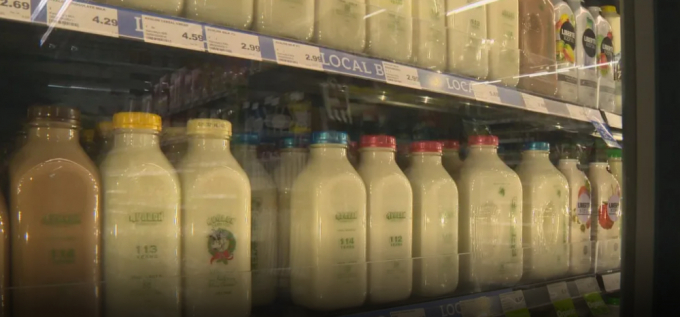
Canada's surging dairy costs are expected to soar even higher in 2022. Photo: GN
The commission announced in October it would be raising the price paid to farmers for milk next year by 8.4 per cent. Internal records obtained by Global News show the increase would have been less if the normal method for setting prices was used.
“The (commission’s) process ignores impacts on Canadian retailers, restaurants and families,” Michelle Wasylyshen, national spokesperson for the Retail Council of Canada, said.
When the commission wants to raise the price of milk, it considers the cost of production, the rate of inflation, plus the interests of farmers, processors, retailers and consumers.
But the commission’s recent announcement failed to mention that the two largest groups representing retailers and restaurateurs in Canada asked for a much lower increase: 3.26 per cent.
The commission also didn’t say that if the normal method for setting prices had been used, the increase given to farmers next year would be 6.4 per cent.
The Dairy Farmers of Canada told Global News it wanted a bigger increase than 6.4 per cent. Exactly how much it wanted is a mystery, though, because neither it, nor the commission, will provide this detail.
The 8.4 per cent increase is the largest in history. It means dairy farmers will earn about $570 million more for the milk they produce next year.
Global News has spent weeks investigating the Canadian dairy industry following the recent price-hike announcement.
The investigation found stakeholder groups at odds with one another over rising prices, growing dissatisfaction around the way prices are set, and long-standing concerns over potential conflicts of interest, and problems with how the commission is managed.
Low-income advocates also say the recent record-breaking price hike will hurt consumers who are already struggling with rising costs. Restaurateurs and retailers insist the hike points toward much bigger problems at the commission, and that the needs of consumers are overlooked in favour of pleasing dairy farmers.
“It is very, very regressive,” said Dr. Lynn McIntyre, professor emerita of community health sciences at the University of Calgary.
“This increase is actually in the midst of many other food increases … These very vulnerable families are going to be drowning in increased prices in terms of trying to figure out how to provide a healthy diet.”
Canada’s dairy industry is among the most tightly restricted sectors in the world.
The “supply management system” protects Canadian dairy, poultry and egg farmers from international competition by imposing massive border tariffs — as much as 300 per cent — on imported dairy products. The system also sets quotas for how much each farm in Canada can produce, and guarantees a “minimum” price for the milk they sell.
Dairy farmers say this system ensures a stable annual income and provides a safe supply of milk and other dairy products. Critics say the system artificially inflates prices by restricting imports and stamping out competition.
Olivier Bourbeau, vice-president of Restaurants Canada, is frustrated with how prices for milk are set. He says the process is opaque and needs to change.
He also says the commission has an interest in pleasing dairy farmers because all of its members are tied to the dairy industry.
“The (commission) is a Crown corporation and it needs to work for all Canadians,” Bourbeau said.
The commission’s board is made up of just three members. Two of them own dairy farms and have extensive backgrounds in the industry. The third grew up on a farm and is the former CEO of the B.C. Milk Marketing Board.
At present, the commission’s rules state one board member must have experience in milk production and one must have experience in milk processing.
Bourbeau said this structure needs to include representatives from the restaurant, retail and consumer sectors. He said that will ensure everyone’s interests are protected when decisions are made — not just dairy farmers and processors.
“We want to be part of it and we’re ready to work with them,” he said.
The commission is tasked with setting the price of milk paid to farmers each year. It then reports any increases to stakeholder groups that represent farmers, processors, restaurants, retailers and consumers.
The formula used to determine price changes considers the cost of milk production, calculated by a randomized and anonymous survey of roughly 200 farms, plus changes to the rate of inflation.
Stakeholders can ask for the formula to be set aside, citing “exceptional circumstances” if certain criteria are met, including unanticipated events and rising costs. The formula has been set aside three of the past five years. The commission says this is due to rising costs.
Bourbeau said the size of the price hike announced in October shows the system is broken.
He also said he wasn’t consulted before the commission posted its final decision. The decision was sent to stakeholders after it was posted to the commission’s website and discussions to explain it were held three days later.
He labelled the decision “nonsense.”
“Why do they not take a deep look at their consumers?” Bourbeau said. “Are our consultations just smoke and mirrors? How can they arrive with something even higher after consulting us?”
The price hike means dairy farmers will receive about six cents more per litre of milk they sell.
And while it’s unclear how much prices will go up for consumers, it will likely hit the most vulnerable Canadians the hardest, at a time when low-income families are already struggling with skyrocketing inflation costs.
MacIntyre, who’s spent 30 years researching food insecurity in Canada, says this country needs a “social safety net” around access to milk, which was already considered an “elite commodity” for low-income families before the recent increase.
In 2011, MacIntyre worked with low-income lone mothers in Nova Scotia on ways to improve their access to milk, proposing policy intervention for an electronic “smart card” that would deliver lower-priced milk to poorer households. The project ultimately failed, MacIntyre said, due to “the entrenched positions of influential stakeholder groups.” That was despite everyone agreeing that milk insecurity was an important issue.
McIntyre says low-income families ration milk when prices go up, from diluting it with water to rationing how much younger children get. She said older kids and women often go without.
“It’s not like every other food price increase that we’re seeing,” MacIntyre said. “This is actually one of our more important staples in terms of health, particularly bone health and growth for children and adolescents.”
In Canada, when farmers produce more milk than they’re allowed to, they can be penalized, but the oversupply is sold to processors, regardless, and the profits are shared across all farmers.
When processors can’t take oversupply, or when milk demand drops drastically, it has to be dumped. This happened at the start of the pandemic, when restaurants and schools closed and processors had fewer customers to sell their products to.
Canadian dairy farmers dumped more than 30 million litres of milk in the year ending July 31, 2020, according to the commission. This accounted for 0.33 percent of the year’s total milk production. In the year ending July 31, 2021, farmers threw away 8.4 million litres of milk, which the commission said is more in line with a typical year.
McIntyre questions why this oversupply can’t be provided to low-income households to ensure the supply management system works for everyone.
“We have such a control over the supply management industry for dairy, it would be one way to actually mitigate some of the new food price stresses … that we don’t have supply management for.”
The commission refused to provide the calculations used to determine the 8.4 per cent increase to the price of milk for next year, adding that it “(does) not make public the ‘ask’ of each stakeholder during the consultations.”
Chantal Paul, a spokesperson for the commission, said the increase is based on discussions with all stakeholder groups and the rising costs for farmers was a key consideration. This includes feed costs, which the commission says increased by about 24 per cent over the past year, and are expected to rise again next year.
“Revenues have not kept up with rising production costs,” Paul said.
A recent annual report from the commission showed the cost of production for farmers has gone up 13.4 per cent over the past two years.
But Farm Credit Canada’s chief economist, J.P. Gervais, says feed prices have already peaked and he doesn’t expect they’ll rise in the future.
“I do think that we’ve seen some of the commodity prices stabilize or get off the highs that we had before,” he said. “I expect prices to remain elevated. But I’m not expecting inflation to continue moving up.”
The commission also says rising costs for farmers were worsened by severe labour shortages in the processing industry during the COVID-19 pandemic. These shortages could lead to rising prices for dairy products, but it’s unclear by how much.
Dairy farmers, meanwhile, argue their costs have risen substantially during the pandemic, so Canadians should have to pay more for milk.
“I’m really sorry to the consumer. I don’t want to make it more expensive for you,” Ottawa dairy farmer Peter Ruiter said.
Ruiter said he wishes milk prices were not announced each year because the price of other commodities are also rising without any official notice to the public. He said this makes the dairy industry, and dairy farmers especially, an easy target for public outrage.
“I could take it on the chin for a little while, but, you know, enough’s enough,” he said.
Ruiter says his costs have “skyrocketed” by 13.5 percent over the past five years.
The most expensive increases on his 60-cow farm was feed — the price of which varies per month, but cost an extra $1,700 in July — and fuel. He says his fuel bill was $10,000 in total in 2020, but this year it’s already $13,000 with two months of the year to go.
Ruiter insists the recent price hike is justified. He says he’s a consumer, too, and is faced with higher costs just like everyone else.
“I’m just trying to get back on my feet,” Ruiter said.
David Wiens, a farmer from Manitoba who runs a 240-cow farm with his brother, says his rising pandemic-related costs have been exacerbated by a drought in the prairies.
Subsidies have helped, he says, but they’re not enough to keep up.
“All you’re doing is kicking the ball forward into next year and the year after,” he said.
Wiens, who is also the vice-president of the Dairy Farmers of Canada, says higher costs are “weighing heavily” on family-run farms.
But over the past three decades, the number of dairy farms went from 31,200 to 9,952, according to Statistics Canada. Meanwhile, the number of dairy cows has remained relatively steady.
This means farms are getting larger. It also means arguments about supporting family-run farms are less relevant than they were 30 years ago.
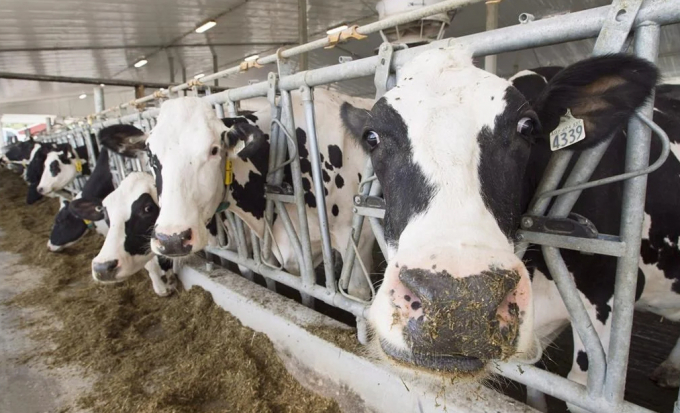
Dairy cows are seen at a farm, Friday, August 31, 2018 in Sainte-Marie-Madelaine, Que. Photo: The Canadian Press
Issues have been raised about the commission in the past. This includes concerns about a lack of expertise and the potential for conflicts of interest arising when setting milk prices, given that board members often have ties to dairy farms.
A 2011 special examination on the commission by the Auditor General of Canada said it was “difficult for the board of directors to have all the skills needed for good governance” with only three members. The report also said the board’s make-up makes it “difficult to avoid conflicts of interest.”
The report found the board “did not have a process in place for directors to periodically declare and manage conflicts of interest,” even though the auditor general recommended it in 2005.
The commission’s chairperson at the time, Randy Williamson, acknowledged the auditor general’s concerns about conflicts of interest during a hearing before a federal parliamentary committee.
“There is an apparent conflict as it relates to the producer ruling on support prices and being part of the process that establishes support prices,” Williamson told the committee. “We recognize that as an issue.”
That same year the commission introduced several new policies to address the potential for conflicts of interest raised by the auditor general, including making it mandatory for board members to declare any conflicts at the start of each meeting.
The commission also decided it would contact outside expertise if board members lacked the necessary skills or knowledge to effectively do its work.
But in another special examination by the auditor general in 2021, the board was found to have a “significant deficiency” in corporate governance due to its size, which could hinder its “capacity and competency” to fulfill its responsibilities.
The report also said the “profiles” of recent board members may pose a risk of “real, potential, or perceived conflicts of interest,” although it didn’t find that any conflicts occurred.
The commission agreed some skills were lacking among board members and said it consults outside experts when necessary.
A spokesperson for Marie-Claude Bibeau, federal minister of agriculture and agri-food, defended the commission, saying it provides a “vital role” in making sure dairy farmers get a “fair return for the high-quality milk” they make for Canadians.
The spokesperson said the three-person commission board has “successfully” carried out its mandate since its inception in 1967 and the size of the board was typical for the agriculture sector.
But Wasylyshen, with the Retail Council of Canada, says the concerns of people who buy milk and dairy products have been overlooked.
She understands that costs have gone up, but she thinks the commission’s process for setting prices lacks transparency and doesn’t accurately reflect what everyone needs.
“Dairy farmers are understandably looking to recoup those costs, but … the vital interests of the grocery or restaurant industries go unrepresented.”
(Global News)
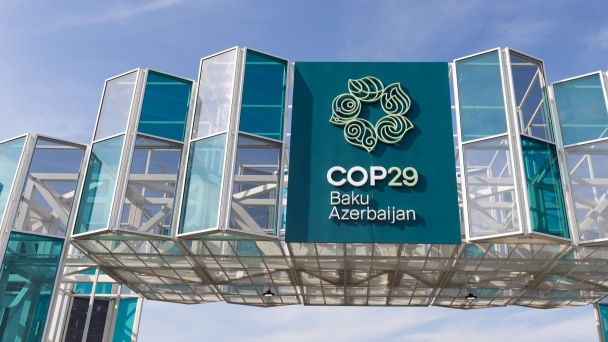
(VAN) At the global meeting in Azerbaijan, FAO raised agrifood solutions as key for addressing the climate crisis and supported the COP29 Presidency with important initiatives.
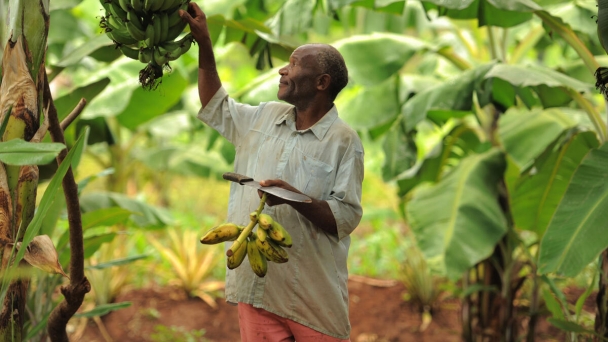
(VAN) Food insecurity and biodiversity loss are the top reported climate-related risks, featuring in 88% of national climate action plans.

(VAN) United Nations climate talks adopted a deal to inject at least $300 billion annually in humanity’s fight against climate_change, aimed at helping developing nations cope with the ravages of global warming in tense negotiations.
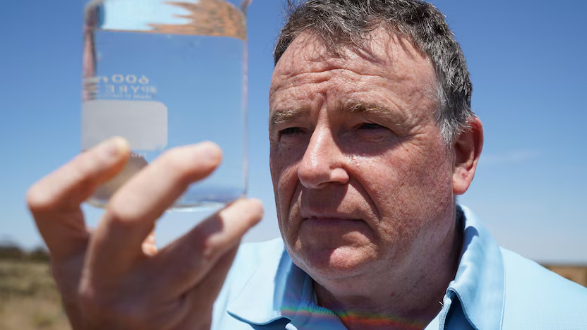
(VAN) Fish and seaweed could soon be farmed at a site in Waikerie by an Adelaide-based aquaculture company. Previous research has found the concept is technically viable, but has not yet been widely replicated in Australia.
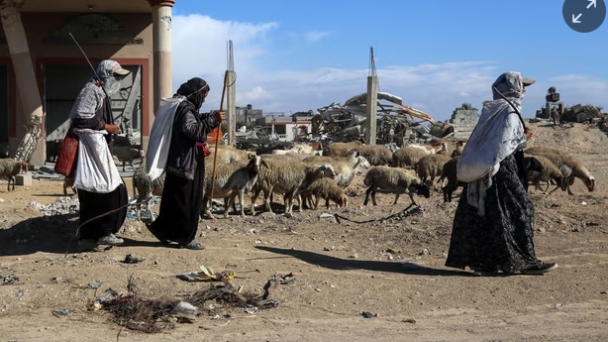
(VAN) Israeli attacks have destroyed huge areas of land used for crops, with 90% of cattle killed, analysis shows.

(VAN) Interview with Manuel Barange, Director of FAO’s Fisheries and Aquaculture Division.

(VAN) Finances, politics and a cultural divide push the agriculture sector to the brink and stir up anger.